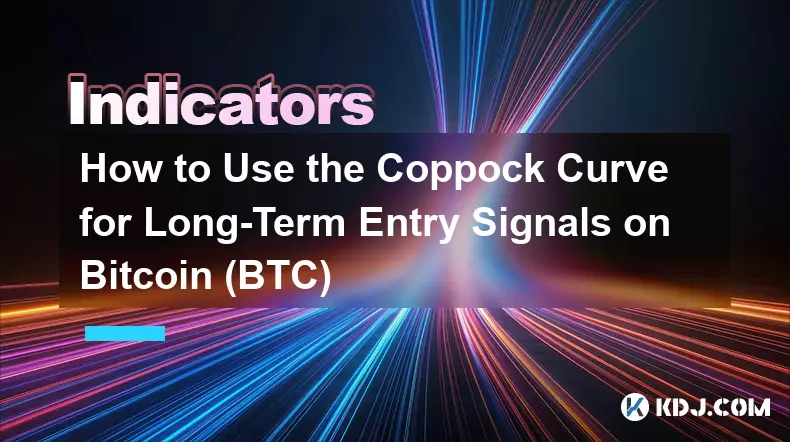-
 bitcoin
bitcoin $99177.955738 USD
-7.32% -
 ethereum
ethereum $3187.183061 USD
-12.38% -
 tether
tether $0.999809 USD
0.00% -
 xrp
xrp $2.117933 USD
-9.42% -
 bnb
bnb $906.710033 USD
-9.17% -
 solana
solana $149.367737 USD
-10.74% -
 usd-coin
usd-coin $0.999816 USD
0.01% -
 tron
tron $0.281498 USD
-0.38% -
 dogecoin
dogecoin $0.156292 USD
-8.00% -
 cardano
cardano $0.500744 USD
-10.19% -
 hyperliquid
hyperliquid $38.087358 USD
-4.58% -
 chainlink
chainlink $14.097831 USD
-8.54% -
 bitcoin-cash
bitcoin-cash $463.329916 USD
-9.22% -
 ethena-usde
ethena-usde $0.999078 USD
-0.01% -
 unus-sed-leo
unus-sed-leo $9.475862 USD
-0.79%
How to Use Fibonacci Retracement for Key Support/Resistance on XRP
Fibonacci retracement helps XRP traders identify key support/resistance levels like 61.8%, especially when combined with volume, market structure, and news context.
Nov 03, 2025 at 04:36 am

Understanding Fibonacci Retracement in the Context of XRP
1. Fibonacci retracement is a widely used technical analysis tool derived from the Fibonacci sequence, which helps traders identify potential support and resistance levels on price charts. In the volatile world of cryptocurrency, especially with assets like XRP, these levels can offer insight into where price might pause or reverse after a significant move. The key retracement levels—23.6%, 38.2%, 50%, 61.8%, and 78.6%—are drawn between a notable high and low to project possible reversal zones.
2. When applying Fibonacci retracement to XRP, traders typically begin by identifying a clear swing high and swing low on the chart. This could be over a daily, 4-hour, or even weekly timeframe depending on the trading strategy. Once those points are marked, the tool automatically plots horizontal lines at the Fibonacci ratios, indicating areas where buyers or sellers may re-enter the market.
3. The 61.8% level, often referred to as the 'golden ratio,' holds particular significance in crypto markets due to recurring psychological and algorithmic behavior. Many institutional algorithms are programmed to react near this level, making it a strong candidate for both support and resistance on XRP’s price action. Traders watch for candlestick patterns, volume spikes, or momentum shifts when price approaches this zone.
4. It's important to remember that Fibonacci levels are not exact predictions but rather probabilistic zones. They work best when combined with other indicators such as moving averages, RSI, or MACD. For XRP, which frequently experiences sharp rallies and corrections, aligning Fibonacci levels with historical price congestion areas increases their reliability.
Step-by-Step Guide to Applying Fibonacci on XRP Charts
1. Open your preferred trading platform—such as TradingView, Binance, or MetaTrader—and load the XRP/USDT or XRP/USD chart. Choose a timeframe that reflects a definitive trend, either bullish or bearish. A clean trend with minimal noise provides the most accurate retracement readings.
2. Select the Fibonacci retracement tool from the toolbar. Click and drag from the most recent swing low to swing high in an uptrend, or from swing high to swing low in a downtrend. Ensure the selected points represent extreme turning points confirmed by volume and closing prices.
3. Observe how the generated levels intersect with previous price reactions. If the 50% or 61.8% retracement aligns with a prior resistance-turned-support (or vice versa), it strengthens the validity of that level. For example, if XRP previously reversed at $0.58 during a pullback and that price coincides with the 61.8% Fibonacci line, it becomes a high-probability trade setup.
4. Monitor price behavior as it approaches each level. Look for signs of rejection, such as long wicks, engulfing candles, or divergence on the RSI. These signals suggest that the Fibonacci level is acting as active support or resistance.
5. Adjust the retracement periodically as new swing points emerge. Markets evolve, and outdated Fibonacci levels may no longer reflect current sentiment. Keeping the tool updated ensures relevance in fast-moving environments like the XRP market.
Combining Fibonacci with Volume and Market Structure
1. Volume analysis enhances the effectiveness of Fibonacci levels. When XRP approaches a key retracement zone—say, the 38.2% level—and trading volume surges, it indicates strong participation. A spike in volume on a rejection candle reinforces the idea that the level is respected by the market.
2. Market structure plays a crucial role. Identify whether XRP is in an established uptrend, downtrend, or ranging phase. In a healthy uptrend, pullbacks to the 50% or 61.8% levels often present buying opportunities, especially if higher lows are forming. Conversely, in a downtrend, rallies stalling at these levels signal selling interest.
3. Integrate order book data if available. On exchanges like Binance or Kraken, large buy walls near a Fibonacci support level confirm institutional or whale presence. Such confluence between technical levels and order flow significantly increases the probability of a successful trade.
4. Use Fibonacci extensions to project take-profit targets beyond the initial swing. After a retracement, if XRP resumes its trend, extension levels like 161.8% or 261.8% can guide exit strategies. These are particularly useful for swing traders holding positions through multiple phases of movement.
5. Avoid relying solely on Fibonacci. Always cross-validate with broader market conditions, including Bitcoin’s trend, regulatory news affecting Ripple Labs, and overall crypto market sentiment. XRP often correlates with macro crypto movements, so isolated technical setups may fail without context.
Frequently Asked Questions
What timeframes work best for Fibonacci retracement on XRP?Daily and 4-hour charts provide the most reliable Fibonacci levels due to reduced noise and stronger confirmation from volume. Lower timeframes like 5-minute or 15-minute can produce false signals because of market manipulation and thin liquidity.
Can Fibonacci predict exact reversal points for XRP?No tool offers exact predictions. Fibonacci retracement highlights zones of interest where reversals are more likely. Success depends on interpreting price action within those zones, not expecting automatic bounces.
Should I use Fibonacci on all XRP trading strategies?It depends on your approach. Trend-following and swing traders benefit most. Scalpers may find it less useful due to shorter holding periods, though they can still use it to identify intraday bias when aligned with higher-timeframe levels.
How do news events affect Fibonacci levels on XRP?Major news—like court rulings involving Ripple—can invalidate existing Fibonacci structures by triggering gaps or extended moves. In such cases, wait for price to stabilize and establish a new trend before redrawing the levels.
Disclaimer:info@kdj.com
The information provided is not trading advice. kdj.com does not assume any responsibility for any investments made based on the information provided in this article. Cryptocurrencies are highly volatile and it is highly recommended that you invest with caution after thorough research!
If you believe that the content used on this website infringes your copyright, please contact us immediately (info@kdj.com) and we will delete it promptly.
- Token Security, Startups, and 2025: A New Era of AI Security
- 2025-11-05 23:00:01
- Crypto Cloud Mining: Trustworthy Sites and Trends to Watch in 2025
- 2025-11-05 23:05:01
- AI-Powered Ascent: S&P 500 Valuations in the Age of Artificial Intelligence
- 2025-11-05 22:50:02
- Nebius, Token Factory, and AI Inference: A New Era of Open-Source AI?
- 2025-11-05 23:10:02
- Cloud Mining in 2025: Platforms, Crypto Earnings, and What to Expect
- 2025-11-05 23:10:02
- Bitcoin Hyper: The Layer-2 Solution Whales Are Pouncing On Amidst Market Dips
- 2025-11-05 23:10:02
Related knowledge

Using TradingView for crypto: essential tips and tools for chart analysis.
Nov 05,2025 at 04:30am
Mastering Chart Types on TradingView1. Selecting the right chart type is crucial for accurate crypto analysis. The default candlestick chart remains a...

Technical analysis for crypto: using RSI and MACD to find trading signals.
Nov 03,2025 at 03:18pm
Decentralized Exchanges Are Reshaping Trading Dynamics1. Decentralized exchanges (DEXs) have gained significant traction by eliminating intermediaries...

Reading crypto charts for beginners: understanding candlestick patterns.
Nov 05,2025 at 02:55am
Introduction to Candlestick Charts in Crypto Trading1. Candlestick charts are one of the most widely used tools in cryptocurrency trading, offering vi...

The Best Exponential Moving Average (EMA) Settings for Crypto Swing Trading
Oct 25,2025 at 04:55pm
The Best Exponential Moving Average (EMA) Settings for Crypto Swing TradingSwing trading in the cryptocurrency market relies heavily on identifying tr...

How to Use the Coppock Curve for Long-Term Entry Signals on Bitcoin (BTC)
Oct 31,2025 at 03:01pm
Understanding the Coppock Curve in Bitcoin Analysis1. The Coppock Curve is a momentum indicator originally designed for stock market indices but has f...

A Beginner's Guide to Finding Divergence with the MACD on the Solana (SOL) Chart
Oct 26,2025 at 12:36pm
Understanding MACD and Its Role in Solana Trading1. The Moving Average Convergence Divergence (MACD) is a momentum indicator widely used in cryptocurr...

Using TradingView for crypto: essential tips and tools for chart analysis.
Nov 05,2025 at 04:30am
Mastering Chart Types on TradingView1. Selecting the right chart type is crucial for accurate crypto analysis. The default candlestick chart remains a...

Technical analysis for crypto: using RSI and MACD to find trading signals.
Nov 03,2025 at 03:18pm
Decentralized Exchanges Are Reshaping Trading Dynamics1. Decentralized exchanges (DEXs) have gained significant traction by eliminating intermediaries...

Reading crypto charts for beginners: understanding candlestick patterns.
Nov 05,2025 at 02:55am
Introduction to Candlestick Charts in Crypto Trading1. Candlestick charts are one of the most widely used tools in cryptocurrency trading, offering vi...

The Best Exponential Moving Average (EMA) Settings for Crypto Swing Trading
Oct 25,2025 at 04:55pm
The Best Exponential Moving Average (EMA) Settings for Crypto Swing TradingSwing trading in the cryptocurrency market relies heavily on identifying tr...

How to Use the Coppock Curve for Long-Term Entry Signals on Bitcoin (BTC)
Oct 31,2025 at 03:01pm
Understanding the Coppock Curve in Bitcoin Analysis1. The Coppock Curve is a momentum indicator originally designed for stock market indices but has f...

A Beginner's Guide to Finding Divergence with the MACD on the Solana (SOL) Chart
Oct 26,2025 at 12:36pm
Understanding MACD and Its Role in Solana Trading1. The Moving Average Convergence Divergence (MACD) is a momentum indicator widely used in cryptocurr...
See all articles










































































